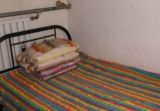如何衡量养老服务对老年人的健康状况的影响?

Answer:
Measuring the Impact of Nursing Homes on Older Adults' Health
1. Physical Health Outcomes:
- All-cause mortality: Compare mortality rates in nursing homes to those in other long-term care settings or community living arrangements.
- Cardiovascular mortality: Assess the incidence of heart attacks, strokes, and other cardiovascular events.
- Respiratory mortality: Monitor the prevalence of respiratory infections and other respiratory complications.
- Fall risk: Evaluate the association between nursing home stay and falls.
- Physical function: Measure changes in mobility, strength, and balance over time.
2. Mental Health Outcomes:
- Depression and anxiety: Monitor the prevalence of depression and anxiety symptoms in nursing home residents.
- Cognitive function: Assess changes in memory, attention, and thinking skills.
- Behavioral health: Evaluate the incidence of substance abuse, self-harm, and other behavioral problems.
3. Social and Emotional Well-being:
- Social interaction: Measure the frequency and quality of social interactions between residents and staff.
- Psychological well-being: Assess residents' levels of happiness, satisfaction, and life satisfaction.
- Emotional support: Evaluate the availability and quality of emotional support provided by staff.
4. Functional Outcomes:
- Activities of daily living (ADLs): Measure residents' ability to perform daily activities such as bathing, dressing, eating, and mobility.
- Instrumental activities: Assess residents' ability to perform self-care tasks such as dressing, bathing, and eating.
- Cognitive function: Evaluate changes in memory, attention, and problem-solving skills.
5. Quality of Life Indicators:
- Resident satisfaction: Conduct surveys or focus groups to assess residents' satisfaction with the quality of care provided.
- Family satisfaction: Gather feedback from families about their experiences with the nursing home.
- Staff satisfaction: Monitor staff satisfaction and retention rates.
6. Cost-Effectiveness:
- Reduced hospitalizations and emergency room visits: Analyze the impact of nursing home care on healthcare costs.
- Increased productivity and workforce participation: Assess the potential return on investment for nursing home care.
7. Longitudinal Studies:
- Conduct repeated assessments of residents over time to track changes in their health and well-being.
-
Prospective studies: Follow a cohort of older adults who enter a nursing home to assess their long-term health outcomes.




















































































